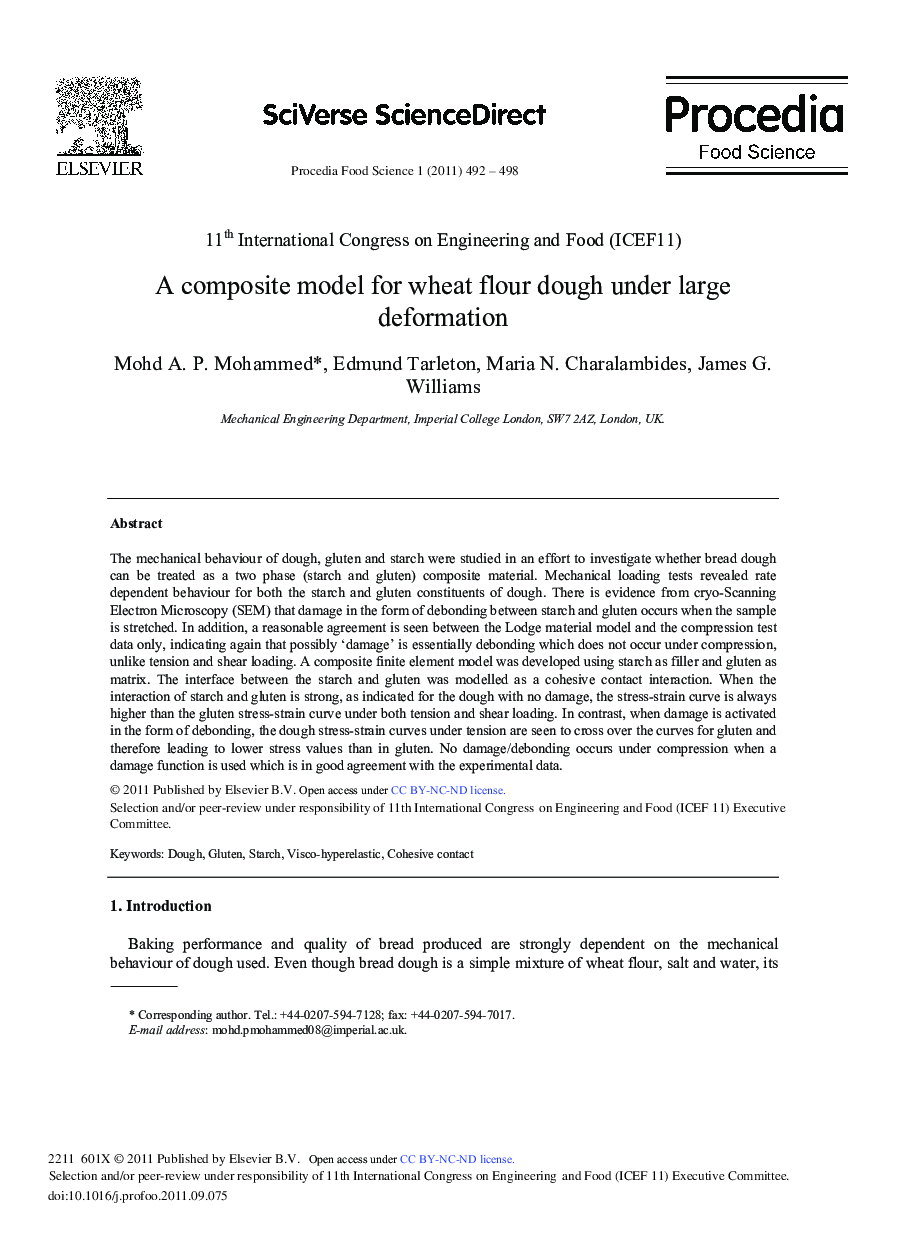| Article ID | Journal | Published Year | Pages | File Type |
|---|---|---|---|---|
| 1264983 | Procedia Food Science | 2011 | 7 Pages |
The mechanical behaviour of dough, gluten and starch were studied in an effort to investigate whether bread dough can be treated as a two phase (starch and gluten) composite material. Mechanical loading tests revealed rate dependent behaviour for both the starch and gluten constituents of dough. There is evidence from cryo-Scanning Electron Microscopy (SEM) that damage in the form of debonding between starch and gluten occurs when the sample is stretched. In addition, a reasonable agreement is seen between the Lodge material model and the compression test data only, indicating again that possibly ‘damage’ is essentially debonding which does not occur under compression, unlike tension and shear loading. A composite finite element model was developed using starch as filler and gluten as matrix. The interface between the starch and gluten was modelled as a cohesive contact interaction. When the interaction of starch and gluten is strong, as indicated for the dough with no damage, the stress-strain curve is always higher than the gluten stress-strain curve under both tension and shear loading. In contrast, when damage is activated in the form of debonding, the dough stress-strain curves under tension are seen to cross over the curves for gluten and therefore leading to lower stress values than in gluten. No damage/debonding occurs under compression when a damage function is used which is in good agreement with the experimental data.
